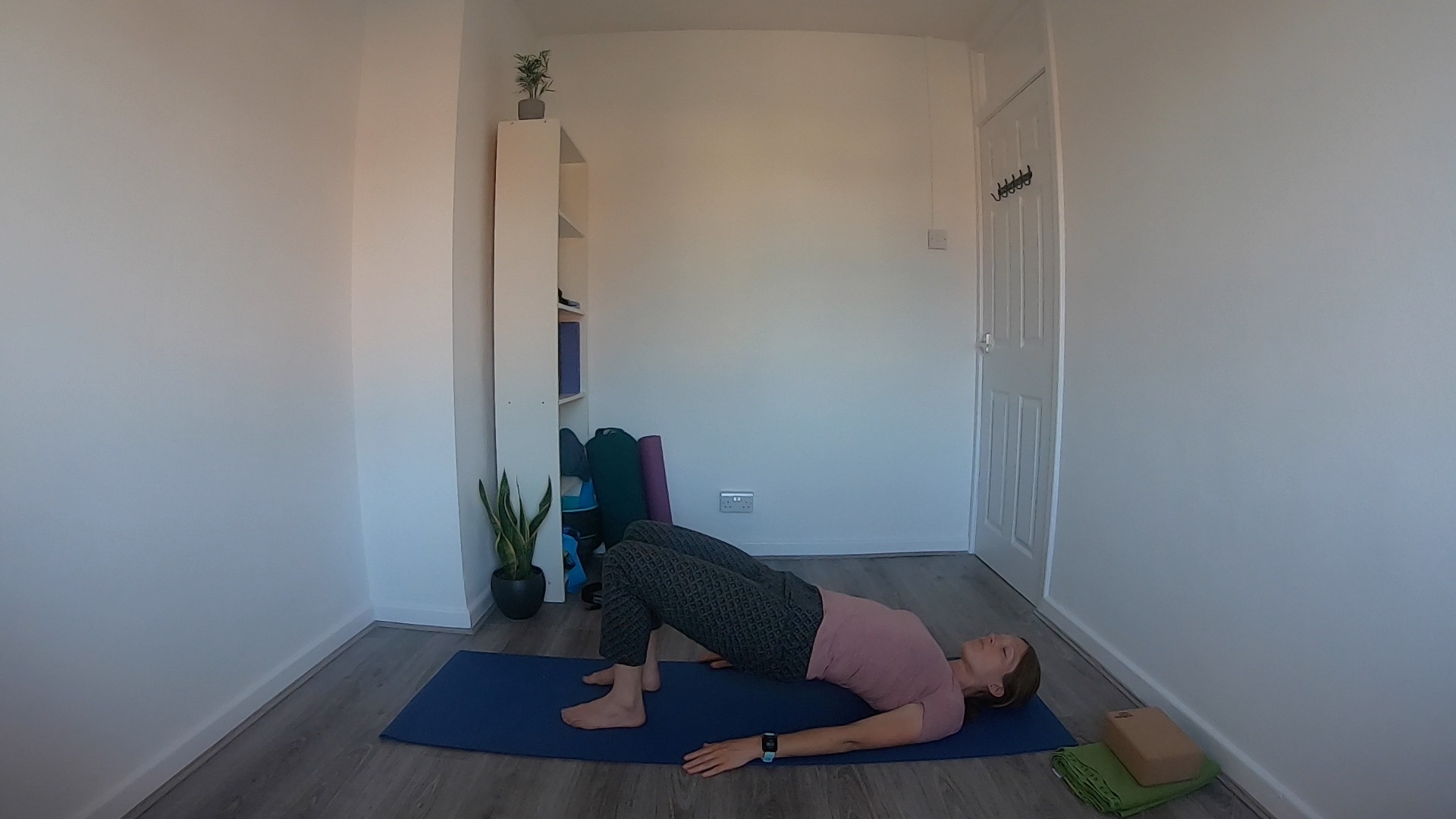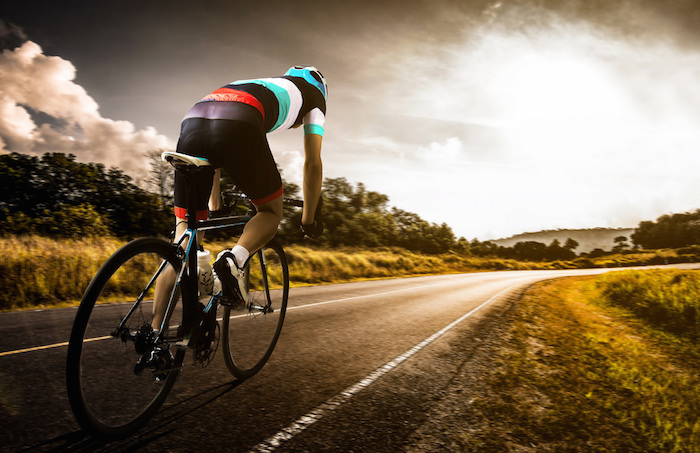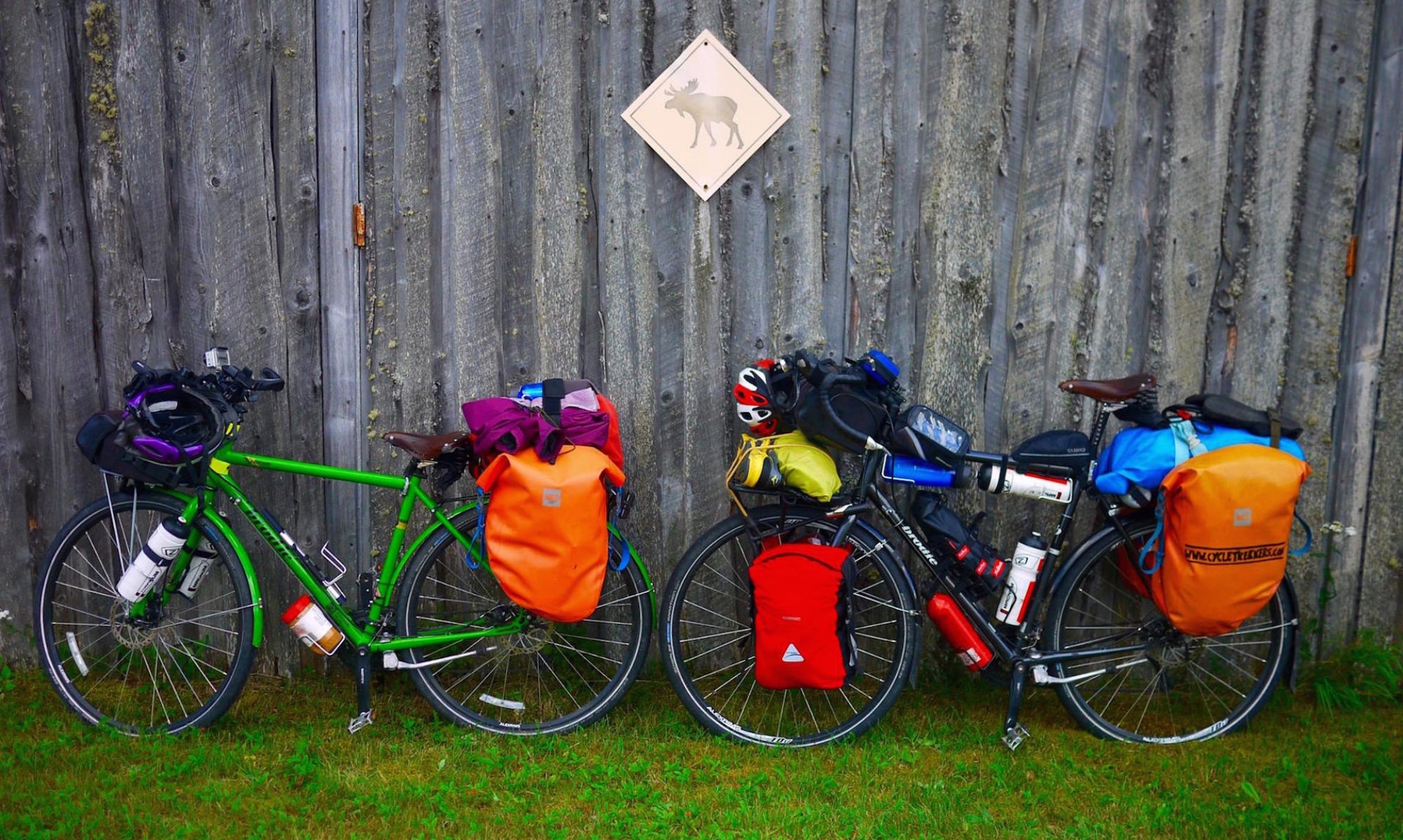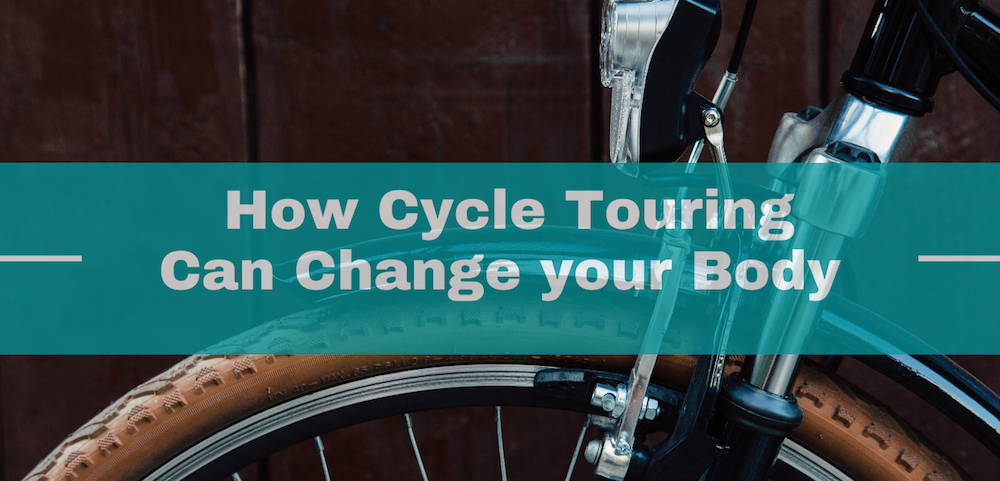Obviously everyone is different, so how cycle touring can change your body will vary from person to person. Last week I wrote about the experience Michael and I had with our bodies while cycle touring. This week I thought I’d write a little more about some of the changes you may experience, and a few ways you can prevent or manage them.
I appreciate this is quite text heavy – there is quite a lot of info there and I hope to eventually put together a suggested training plan that will help address these points a bit more. Sign up to the email list if you want to be updated when this is available (no set date yet).
Rounding of the Upper Back/ Shoulders
The typical cyclist position where we lean forward towards the handle bars creates a rounding in the spine and often means our shoulders hunch forward or up (or both). This stretches (lengthens) the muscles between the shoulder blades and shortens the muscles in the pecs. If we don’t do anything to counteract this movement, then the muscles in these areas don’t get the opportunity to readjust or (let’s call it) neutralise.
This can lead to weak muscles in between the shoulder blades and tight chest muscles – meaning we start to develop a gradual rounding or hunching of the upper back. This can then lead to lots of other issues, such as neck and shoulder pain, bad posture and lower back pain.
When next riding, notice whether you tend to draw your shoulders up towards your ears when you ride – this can result from weak rhomboids (as well as other muscles that are in between the shoulder blades). Drawing your shoulders towards your ears for a prolonged time can also create neck and shoulder pain and add to the rounding or hunching forward. You can try and manage this by strengthening the upper back, and actively drawing the shoulder blades down the back.
What can you do to prevent this rounding/ hunching?
1. Make sure you stretch with counterposes after your ride.
This means doing stretches that open across the chest and pulls the shoulder blades together. Gentle backbends can also help, however be careful not to take anything too extreme straight after cycling (such as a yoga pose known as wheel), as spending a long time rounding forward, to suddenly bend in the opposite direction can upset the spine.
When stretching the chest muscles, try and contracting the muscles between the shoulder blades. By doing this you’ll also benefit from a concept known as, reciprocal inhibition. This is where engaging the opposite muscles to those you want to stretch, will help you deepen into the stretch of the target muscles. This means you will engage and strengthen the back muscles, as well as getting a good stretch in the the pecs and front body.
I’ve created a short chest opening sequence here. This wasn’t created specifically for cyclists and I don’t cover much on reciprocal inhibition (though I do plan to create one in future), however it will give you an idea of the kinds of exercises that stretches across the chest. If you are experiencing a lot of neck pain, you may also like this short sequence.
2. Exercises to strengthen the upper back are also great.
These can be done at any point, but are particularly great to incorporate into your pre-cycle tour training plan. The stronger the back muscles are when you start your tour, the less likely you’ll experience the rounding, as well as neck and shoulder pain. When doing these exercises make sure you draw the shoulder blades down the back. I’ve written a new article, which includes a sequence to help you strengthen your back and prepare you for your next/ first cycle tour.
3. You can also try engaging the upper back muscles while cycling.
You don’t have to do this constantly, but just enough that you’re engaging these muscles. This just helps to keep the muscles active.

Inactive Glutes
I wrote a little about my experience with this last week. In brief, your leg muscles can become so strong from overuse that it can lead to your glute muscles becoming a bit less active. This leads to weak glute muscles as well as a bit of a disconnect with the sensory and motor neurons that connect your brain with the glute muscles. This means when you start to try and activate them, it can take a while before you can actively engage them (ie. your brain can’t easily tense the muscles in your bum, when you try to tense them). This actually happened to me, so I can vouch for the science behind this.
Overactive leg muscles can have lots of knock on effects – for me I had less support when running downhill, which meant instead of the impact being absorbed by my glutes, my knees were taking the impact. Obviously, my knees weren’t too happy about this.
Overactive or tight leg muscles (ie. when the muscles shorten) can also create lower back pain and pelvis tilts. This occurs as the shortened muscles pull down on the muscles in the lower back and pelvis, bring them out of alignment.
What can you do to prevent inactive glutes?
1. Exercises to strengthen the glutes – bridge dips and squats are great.
Different Bridge exercises was actually what my physio prescribed to me to help me restrengthen my glutes.
2. Also try actively engaging the glutes
Yes, I mean squeeze your butt once in a while – this helps to keep the neuron pathways active.
3. Try a body scans
If you’re into meditations or fancied giving them ago – body scans are also great for keeping the neuron pathways in the body active, as they bring awareness to the different body parts. I recently completed a meditation course and recorded a couple of guided meditations that include body scans – you can sign up to receive them for free, here.

Lower Back Pain
Linked to the above issue and briefly touched on – tight (short) leg muscles can pull on the lower back and pelvis, causing lower back pain and influence the position of the pelvis, bringing it out of alignment.
As well as causing lots of discomfort, these tight muscles can influence the way you walk and the amount of impact or force placed on the different body parts and joints.
What can you do to prevent this from occurring?
1. Gentle twists and side bend stretches can help relieve lower back pain in the short term.
When twisting, make sure you’re twisting from the belly and not the shoulders – it’s just a bit kinder on the spine.
2. For more long term solutions, make sure you stretch your legs after a cycle.
I do cover this a little bit in the Yoga for Cyclists course.
I’ve also created a new short Yoga for Lower Back Pain course, which covers the common causes of lower back pain and will equip you with some exercises you can incorporate into your training plan or to use while on tour. It also includes a bonus 7 day core challenge (because the back is part of the core – and hey, why not challenge yourself?).
This course is designed to give you some exercises to help prevent lower back pain in the long term. It doesn’t however replace medical guidance.
Weakened Spine
Rounding forward can weaken the muscles that support the spine. This works in the exact same way as how the upper back muscles weaken – the constant rounding forward is a constant stretch on the back of spine. This can lengthen the ligaments, connective tissue and muscles that support the spine (muscles such erector spinae). Over a prolonged period of time this can weaken the muscles, as we’re not regularly contracting these muscles (or counteracting this stretching action), which helps to strengthen these muscles.
What can you do to prevent this?
1. Strengthen the core can really help protect the spine and strengthen the muscles that support the spine.
This is something that I definitely suggest incorporating into any pre-cycle tour training plan. To get you started you can sign up to the 7 day core challenge!
2. Twists, side bends and gentle back bends can counteract the bending forward motion.
Side bends and gentle twists are great for getting any kinks out of the spine. After a ride it’s a good idea to incorporate a few of these stretches into your post ride cool down. By stretching in the opposite direction to when we ride, we bring the previously stretched muscles (in this case the back muscles) into contraction – which strengthens them.

Numbness in the hands/ wrists
A friend I met while cycle touring in Canada got numbness in the hands really bad – to the point she couldn’t move or feel or pinky fingers. Though I’ve never experienced anything quite that bad, I have experienced hand and wrist aches and pains.
Carpel Tunnel Syndrome is also something that can develop from constant and too much pressure on the heel of the wrists.
What can you do to prevent this?
1. This is one that might be better managed by changing handle bar grips and gloves.
I also found it helped to not do up my cycle gloves – I guess this helped with circulation and mobility of the wrists.
2. You could also look at your posture on the bike.
Notice whether you are dumping too much weight into the heel of the hands – maybe play around with the height of the handle bars, grips and seat.
3. To relieve wrist and hand pain there are some exercises you could do.
I created a short video on hand and feet stretches, as part of a 30 day yoga challenge – feel free to check it out if you are experiencing any discomfort or tightness in the hands.
I’ve also created a short sequence to increase fluid to the wrists which can help with mobility and reduce tension in the wrists.
4. Massaging the hands is also a great way to increase blood flow to the area and relieve any pain.
This article covered a lot of the common changes you might experience – however if there was anything else that you’ve experienced I would love to hear about it.
Also in this article about how cycle touring can change your body, I’ve highlighted a lot of the issues you may develop when cycle touring – however it’s important to recognise it’s not all bad. There are also loads of benefits of cycling too. We just don’t usually have to manage these benefits as much, so I’ve not covered them here 🙂

